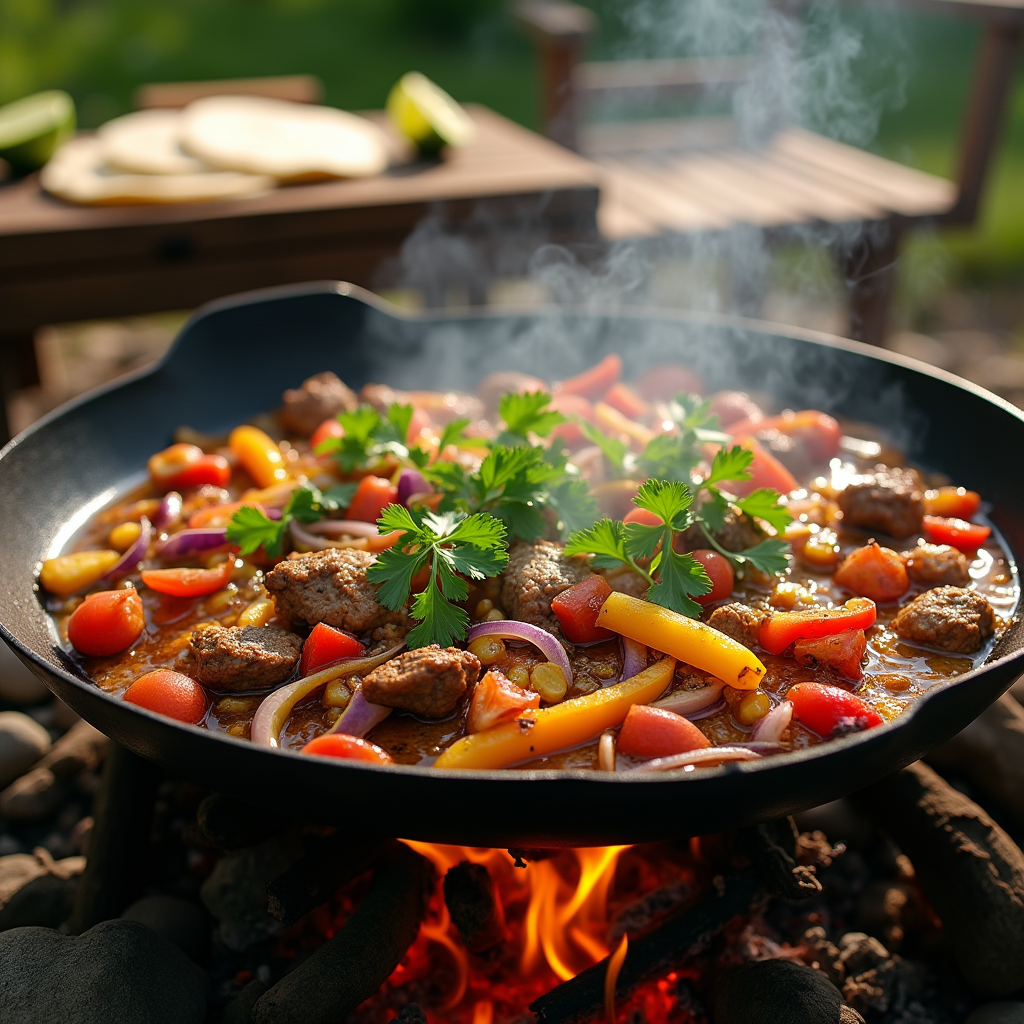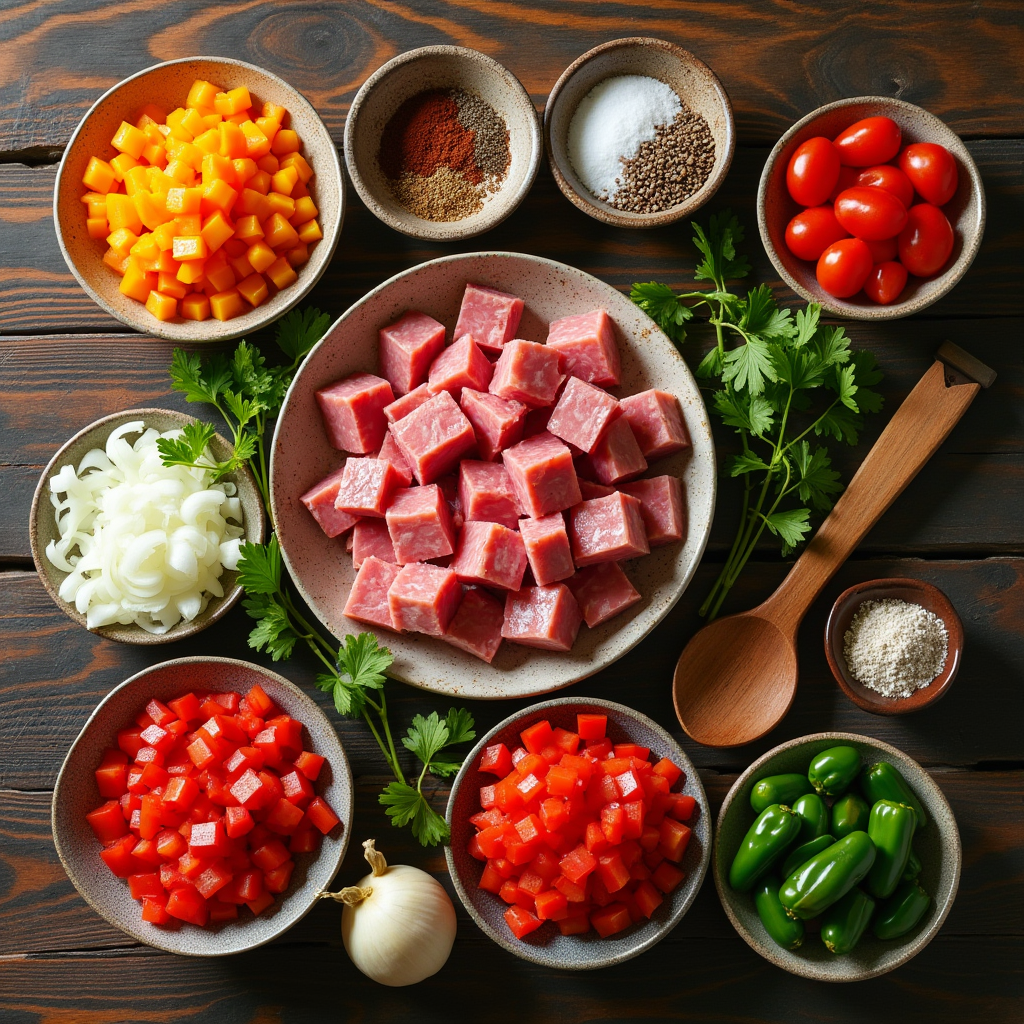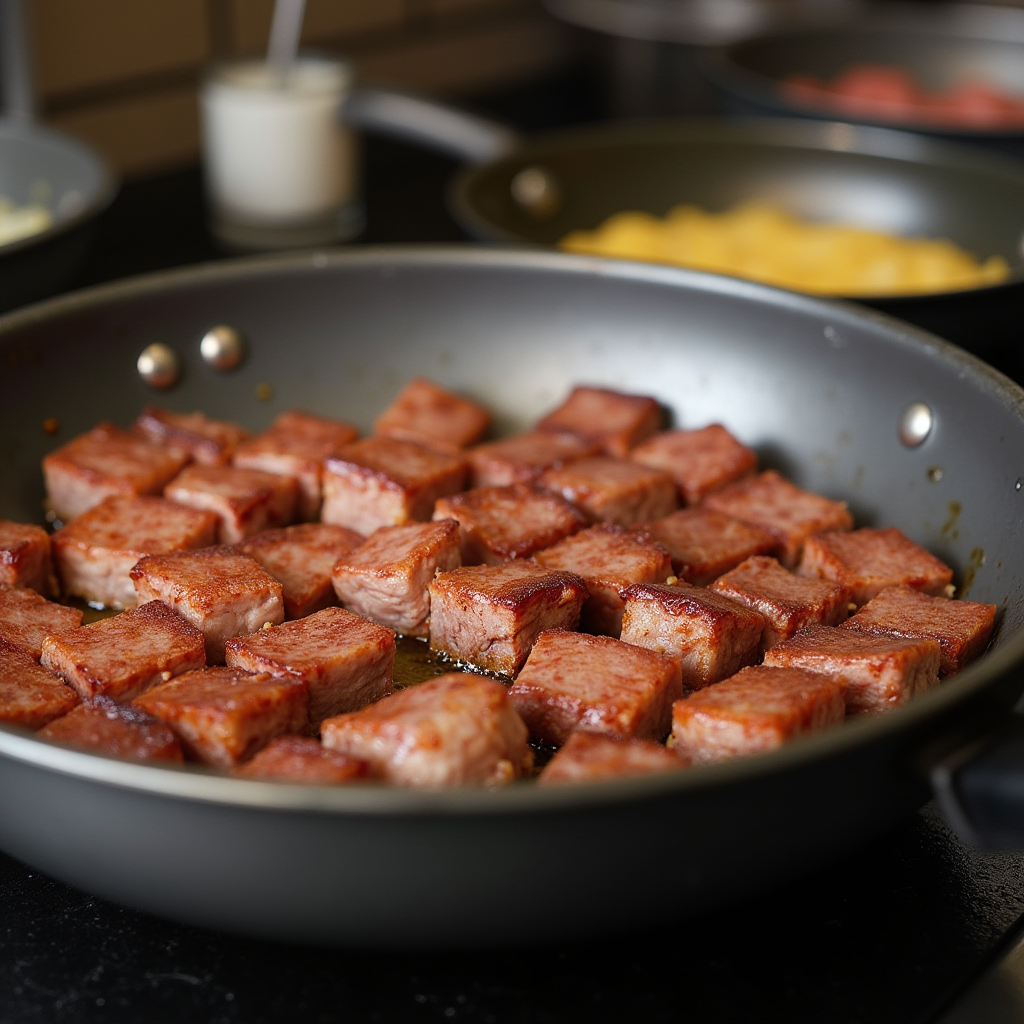Traditional Discada Recipe: A Taste of Northern Mexican Cuisine

If you’re looking to spice up your cooking repertoire with a dish that’s packed with flavor and steeped in tradition, look no further than discada! A classic from Northern Mexican cuisine, discada is a mouthwatering one-pan dish cooked on a special griddle called a trompo or discada pan. Known for its versatility and bold flavors, this recipe brings together a medley of meats, fresh vegetables, and perfectly balanced seasonings to create a feast that’s perfect for any occasion.
Whether you’re hosting a backyard cookout, planning a family gathering, or just want to try something new, this traditional discada recipe will transport your taste buds straight to the heart of Mexico. In this post, we’ll explore everything you need to know—from the dish’s origins and ingredients to tips for cooking and serving it like a pro. Get ready to create a dish that’s not just delicious but also a true celebration of Mexican culture!
Table of Contents
1. What is Discada?
Origin of Discada: Brief History of Its Roots in Northern Mexico
Discada is a flavorful and hearty dish that traces its origins to the rugged landscapes of Northern Mexico, particularly in regions like Chihuahua, Durango, and Nuevo León. Its name comes from the “disco”, a disc-shaped agricultural plow blade traditionally repurposed as a cooking surface by local farmers and cowboys. These improvised griddles, placed over an open flame, became the perfect tool for creating large, communal meals from whatever ingredients were on hand. This inventive cooking method gave birth to the dish we now know as discada.
Over time, discada evolved from a practical meal for ranch workers and farmers to a celebrated dish in Northern Mexican households and gatherings. It remains a staple at outdoor events, symbolizing hospitality and shared enjoyment.
Cultural Significance: How Discada Is Celebrated in Mexican Gatherings and Cowboy Cooking
Discada is more than just a meal—it’s a symbol of community and celebration in Mexican culture. Traditionally prepared outdoors during large gatherings, discada brings people together around the cooking pan, creating an interactive and festive atmosphere. From family reunions and weddings to informal cookouts and fiestas, discada holds a special place in Northern Mexican celebrations.
Its roots in “cowboy cooking” (cocina vaquera) highlight the ingenuity and resourcefulness of Mexican ranchers. By combining readily available ingredients like beef, pork, chorizo, and fresh vegetables, they created a dish that was not only delicious but also practical for feeding large groups. Today, discada represents a fusion of traditional flavors and the rustic spirit of rural Mexico.
Unique Cooking Style: Using a Trompo/Discada Pan for This Dish
The distinctive cooking method of discada sets it apart from other Mexican dishes. Traditionally, it is prepared in a discada pan, a round, concave griddle resembling a shallow wok. These pans, often made from steel, are designed to distribute heat evenly, allowing the ingredients to cook to perfection.
The cooking process involves layering the ingredients strategically, starting with the fattier meats like bacon or pork to create a flavorful base. As the fats render, they infuse the pan with rich, smoky flavors that enhance the vegetables and other proteins added later. The high heat of the pan ensures a beautiful sear on the meats while caramelizing the vegetables, resulting in a dish bursting with bold, savory flavors.
For those without access to a traditional discada pan, modern alternatives like cast-iron skillets or large griddles can still produce a satisfying result. However, the authenticity and charm of cooking discada on a trompo outdoors over an open flame are unmatched, making it an experience as memorable as the meal itself.
2. Traditional Discada Ingredients
One of the greatest things about discada is its versatility, allowing you to customize the recipe based on your preferences or available ingredients. However, the key to an authentic traditional discada lies in combining rich, savory proteins, fresh vegetables, bold seasonings, and a touch of creativity. Here’s a breakdown of the essential ingredients that bring this dish to life:

Proteins: Common Meats Like Beef and Chorizo
The foundation of any great discada is its variety of proteins, which create a rich and hearty base. Traditional recipes typically include:
- Beef: Often ground or thinly sliced, it provides a robust flavor and tender texture.
- Chorizo: Mexican chorizo, with its spicy and tangy notes, infuses the dish with a bold, unmistakable flavor.
Some variations may also include other proteins, like hot dogs, or even chicken, depending on regional preferences. These meats are usually cooked in stages, starting with the fattier cuts to render their oils, which serve as the cooking base for the rest of the ingredients.
Vegetables: Bell Peppers, Onions, Tomatoes, and Garlic
Fresh vegetables are essential for balancing the dish’s richness with their natural sweetness and acidity. The most common vegetables in discada include:
- Bell Peppers: Red, green, or yellow bell peppers add vibrant color and a sweet crunch to the dish.
- Onions: Caramelized onions lend a slightly sweet and savory flavor, perfectly complementing the proteins.
- Tomatoes: Diced or pureed, tomatoes bring acidity and juiciness, creating a natural sauce for the dish.
- Garlic: A few cloves of minced garlic deepen the overall flavor profile with their aromatic notes.
These vegetables are added after the proteins are partially cooked, allowing them to absorb the flavorful juices and spices in the pan.
Seasonings: Cumin, Salt, Pepper, and Optional Spices for a Regional Twist
No discada is complete without its signature seasonings, which tie all the ingredients together into a harmonious flavor profile. Some key seasonings include:
- Cumin: A staple in Mexican cuisine, it provides warm, earthy notes that elevate the dish.
- Salt and Pepper: Simple yet essential for enhancing the natural flavors of the ingredients.
- Optional Spices: Depending on your taste, you can add chili powder, paprika, or dried oregano for extra depth.
Regional variations may also include hints of adobo sauce, smoked paprika, or even ground coriander to create unique flavor profiles.
Optional Additions: Liquids to Enhance Flavor
For an extra layer of flavor and moisture, many cooks add liquids during the cooking process. Popular choices include:
- Broth: Chicken or beef broth can be used for a lighter, more savory option.
- Citrus Juice: A squeeze of lime or orange juice can brighten the dish with a tangy finish.
These liquids are typically added toward the end of cooking, allowing them to reduce slightly and meld with the rendered fats and seasonings, creating a rich, flavorful sauce.
By combining these ingredients in just the right way, you’ll create a discada that’s not only visually appealing but also bursting with authentic Mexican flavors. Whether you stick to tradition or experiment with your own twist, the beauty of discada lies in its flexibility and endless potential for deliciousness.
3. How to Make Discada: Step-by-Step Instructions
Making discada is a rewarding process that brings together bold flavors, hearty ingredients, and a touch of rustic charm. While the dish may seem complex, following these step-by-step instructions will ensure you achieve a delicious and authentic result.
Preparing Your Ingredients: Tips for Cutting Meats and Vegetables Uniformly
Preparation is key to creating a cohesive and well-cooked discada. Follow these tips to ensure your ingredients are ready for the pan:

- Meats:
- Cut beef and chorizo into uniform, bite-sized pieces to ensure even cooking.
- For bacon, dice it into small chunks to render fat efficiently.
- If using additional proteins like hot dogs, slice them into thin rounds for even texture.
- Vegetables:
- Dice onions, bell peppers, and tomatoes into similar-sized chunks for balanced cooking and presentation.
- Mince garlic finely to distribute its flavor evenly throughout the dish.
- Keep your vegetables fresh and crisp by prepping them just before cooking.
- Organize Your Ingredients: Arrange your prepared items in separate bowls or plates, so they’re ready to add to the pan in the proper order.
Cooking in a Discada Pan: The Right Technique to Layer and Stir-Fry Ingredients
The cooking process in a discada pan (or any large griddle or skillet) is what sets this dish apart. Follow these steps for best results:
- Heat the Pan: Preheat the pan over medium-high heat until hot. If using a discada pan, ensure it’s evenly heated across the surface.
- Render Fat from Bacon: Start with the fatty meats like bacon . Cook them until they release their fat and turn crispy. Remove and set aside, leaving the rendered fat in the pan.
- Cook Proteins: Add the remaining proteins (beef, chorizo, and optional ham or hot dogs). Stir-fry them in the rendered fat, allowing them to brown evenly. Remove and set aside when cooked.
- Sauté Vegetables: Add onions, garlic, and bell peppers to the pan, stirring frequently to prevent burning. Cook until softened and slightly caramelized.
- Combine Everything: Return the cooked meats to the pan, mixing them with the vegetables. Add diced tomatoes, allowing their juices to create a flavorful base.
- Optional Liquid Addition: Deglaze the pan with a splash of beer, broth, or citrus juice to lift any browned bits from the surface. Let the liquid reduce slightly for a richer flavor.
Achieving the Perfect Flavor: Balancing Spices and Flavors for Authentic Taste
Balancing the seasonings and flavors is crucial to capturing the essence of traditional discada. Here’s how to get it right:
- Season Gradually: Start with cumin, salt, and pepper, adding small amounts as you cook. Taste frequently to adjust as needed.
- Layer the Flavors: Allow each ingredient to contribute to the overall flavor profile. The rendered fat from the meats, the sweetness of caramelized vegetables, and the acidity of the tomatoes all work together.
- Enhance with Optional Spices: For a spicier dish, add chili powder or diced jalapeños. A touch of oregano or smoked paprika can also deepen the flavor.
- Finish with Freshness: Just before serving, squeeze a little lime juice over the discada for brightness. You can also sprinkle chopped cilantro for a fresh, herbal note.
By following these steps, you’ll master the art of making discada, creating a dish that’s flavorful, satisfying, and perfect for sharing. The beauty of this recipe lies in its adaptability, so don’t be afraid to experiment while staying true to the core techniques and ingredients.
4. Tips for Serving and Pairing Discada
After mastering the preparation of discada, serving it in the right way will elevate the dish from delicious to unforgettable. Here’s how to make your discada experience complete with thoughtful accompaniments, beverage pairings, and tips for hosting a memorable cookout.
Serving Suggestions: Warm Tortillas, Fresh Salsa, and Guacamole
Discada is best served with classic Mexican sides that complement its rich, smoky flavors. Consider these serving ideas:
- Warm Tortillas:
- Use freshly made corn tortillas or flour tortillas as a base for scooping up the flavorful mixture.
- To enhance their flavor, warm the tortillas over a hot griddle or directly on a flame for a slight char.
- For a creative twist, try serving discada in mini tortillas for taco-style bites, perfect for parties or gatherings.
- Fresh Salsa:
- Pair the dish with pico de gallo, a fresh and tangy mix of tomatoes, onions, cilantro, lime, and jalapeños.
- Alternatively, a smoky salsa roja or a vibrant salsa verde can add an extra kick of flavor.
- Guacamole:
- The creamy texture of guacamole balances the dish’s bold flavors. Prepare a simple guacamole with mashed avocados, lime juice, salt, and a hint of garlic or jalapeño.
- Serve it on the side or spoon it directly onto tortillas with the discada.
- Additional Toppings:
- Add shredded cheese, sour cream, or pickled jalapeños for extra layers of flavor.
- A sprinkle of fresh cilantro and a wedge of lime are great finishing touches.
Drink Pairings: Traditional Mexican Refreshing Aguas Frescas
The right drink can enhance your enjoyment of discada, whether you’re aiming for a casual vibe or a festive celebration.
- Aguas Frescas:
- For non-alcoholic options, aguas frescas are a perfect choice. Popular flavors include hibiscus (jamaica), horchata (cinnamon rice drink), and limeade. These drinks provide a refreshing contrast to the dish’s savory elements.
- Prepare your aguas frescas in advance and serve them in large pitchers for easy self-service.
- Cocktails:
- Classic margaritas or palomas made with tequila and fresh citrus can add a festive flair.
Hosting a Cookout: Making Discada the Star of Your Next Outdoor Gathering
Discada is a dish that shines in outdoor settings, making it ideal for cookouts, backyard parties, and casual get-togethers.
- Set Up an Outdoor Cooking Station:
- If you have a trompo pan or large griddle, place it over a propane burner or open flame for an authentic cooking experience.
- Guests can gather around to watch and engage in the cooking process, adding to the festive atmosphere.
- Create a Taco Bar:
- Offer a DIY taco bar with warmed tortillas, bowls of discada, and a variety of toppings such as salsas, guacamole, shredded lettuce, and cheese.
- Include sides like Mexican rice and refried beans to round out the meal.
- Add Decor:
- Decorate with colorful tablecloths, string lights, and traditional accents like papel picado (Mexican paper banners).
- Plan for Seconds:
- Discada is a crowd-pleaser, so make sure to prepare enough for second servings. Keep it warm in the pan for easy serving throughout the event.
By combining thoughtful serving suggestions, complementary drink options, and a fun hosting setup, you’ll turn your discada into more than just a meal—it’ll be the centerpiece of an unforgettable culinary experience. Let the vibrant flavors of Northern Mexico bring people together and create memories that last long after the plates are empty!
5. Regional Variations and Frequently Asked Questions
Discada is a versatile and celebrated dish, and its preparation can vary depending on the region. Additionally, understanding how to adapt the recipe and handle leftovers ensures you get the most out of your discada experience. Below, we explore regional twists and address common questions about this iconic dish.
Regional Twists: Differences in Discada Recipes Across Chihuahua, Durango, and Nuevo León
Each region in Northern Mexico brings its own unique flair to discada, resulting in subtle yet delicious variations:
- Chihuahua:
- The birthplace of discada, Chihuahua-style discada is often the most traditional. It features a mix of beef and chorizo, along with hearty additions like hot dogs.
- Vegetables such as onions, tomatoes, and bell peppers are cooked in rendered fat, creating a rich, savory flavor profile.
- The dish is typically prepared outdoors in a large trompo pan and is popular at ranch-style gatherings.
- Durango:
- Durango’s version of discada leans toward a spicier profile, often incorporating chili peppers or spicy chorizo for a bold kick.
- This variation may include additional seasonings like oregano or paprika, giving it a smoky depth of flavor.
- In some cases, cactus paddles (nopales) are added for a regional twist that highlights local ingredients.
- Nuevo León:
- In Nuevo León, discada often includes a splash of citrus juice for added moisture and brightness.
- This version may feature slightly more vegetables, such as zucchini or green onions, to balance the dish’s richness.
- It’s common to serve Nuevo León-style discada with homemade flour tortillas, a staple in the region.
These regional differences demonstrate how discada adapts to local tastes while maintaining its core identity as a communal, flavorful dish.
Frequently Asked Questions (FAQs)
Can I Make Discada Without a Trompo Pan?
Absolutely! While a trompo pan (or discada pan) is ideal for authenticity, you can use several alternatives:
- A large cast-iron skillet or griddle works well, as it distributes heat evenly and allows for high-heat cooking.
- If cooking for a crowd, consider using a flat-top grill or a wide wok for similar results.
- For an outdoor experience, use a large Dutch oven over a campfire or a propane burner.
The key is to have a wide, shallow surface that allows the ingredients to cook evenly and develop a rich, caramelized flavor.
What Meats Can Be Substituted in the Recipe?
One of the great things about discada is its flexibility. If certain meats are unavailable or you want to try something different, here are some substitution ideas:
- Beef: Swap for ground turkey, ground chicken, or even lamb for a unique twist.
- Chorizo: Use andouille sausage, Italian sausage, or a vegetarian chorizo for similar flavors.
- Hot Dogs: Feel free to skip these or replace them with smoked sausage or kielbasa for a smoky flavor.
The goal is to maintain a balance of flavors and textures, so feel free to mix and match based on your preferences or dietary needs.
How Do I Store and Reheat Leftovers?
Discada is a dish that reheats beautifully, making it perfect for leftovers. Here’s how to store and enjoy it later:
- Storing:
- Allow the discada to cool to room temperature before transferring it to an airtight container.
- Store in the refrigerator for up to 3-4 days. If you plan to keep it longer, freeze it for up to 3 months.
- Reheating:
- For the best flavor and texture, reheat discada in a skillet over medium heat. Add a splash of water or broth to keep it moist.
- Alternatively, microwave it in a covered dish, stirring occasionally to ensure even heating.
- If frozen, let the discada thaw in the refrigerator overnight before reheating.
- Repurposing Leftovers:
- Use the reheated discada as a filling for tacos, burritos, or quesadillas.
- Add it to scrambled eggs for a hearty breakfast, or serve it over rice for a quick and satisfying meal.
By considering regional variations and understanding how to adapt and store your dish, you’ll get the most out of your discada recipe. Whether you recreate a traditional version or experiment with your own twist, the result is sure to be tasteful every time.
Conclusion
Discada is more than just a recipe—it’s a celebration of community, flavor, and tradition. Whether you’re preparing it for a family dinner, a casual cookout, or a festive gathering, this dish is sure to impress with its rich, smoky, and layered flavors.
Recap the Benefits
- Quick to Prepare: While it may look elaborate, discada is surprisingly quick and straightforward to make. With a bit of prep and an organized cooking process, you can have a delicious, crowd-pleasing meal ready in no time.
- Healthy and Balanced: Packed with proteins and fresh vegetables, discada offers a hearty and satisfying meal that doesn’t compromise on nutrition.
- Customizable: Whether you stick to the traditional ingredients or add your own twist, discada is incredibly adaptable. From regional variations to dietary substitutions, this dish can suit any palate.
- Family-Friendly: Discada’s vibrant flavors and interactive serving style make it a hit with family and friends of all ages. It’s perfect for sharing and encourages communal dining, bringing everyone together over a delicious meal.
Encourage Readers to Try the Recipe
Now that you’ve learned how to prepare this flavorful and versatile dish, it’s time to bring the taste of Northern Mexico into your kitchen. Gather your ingredients, fire up your pan, and get ready to enjoy the incredible flavors of homemade discada.
Call-to-Action
We’d love to hear from you! Have you tried this recipe? Do you have a favorite variation or personal twist that makes your discada unique? Let us know in the comments below! Share your experience, tips, and creative additions so we can celebrate the versatility of this dish together.
Whether you’re a first-time discada cook or a seasoned pro, this recipe is an invitation to explore and enjoy a cherished part of Mexican culinary heritage. So grab your pan, invite your loved ones, and let the flavors of discada transport you to the heart of Northern Mexico. Buen provecho!
Review Our Recipe: Your Feedback Makes a Difference
There are no reviews yet. Be the first one to write one.
